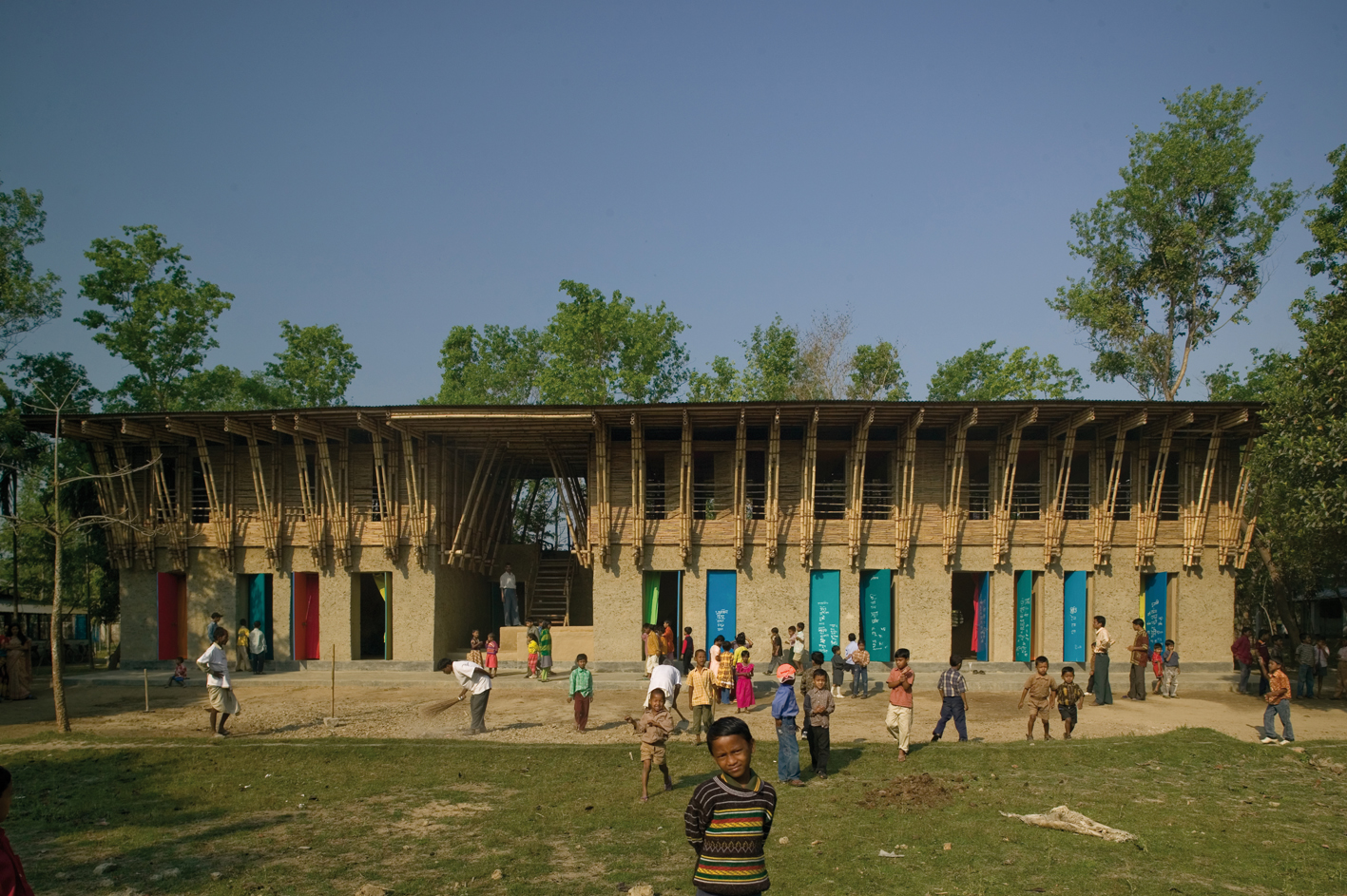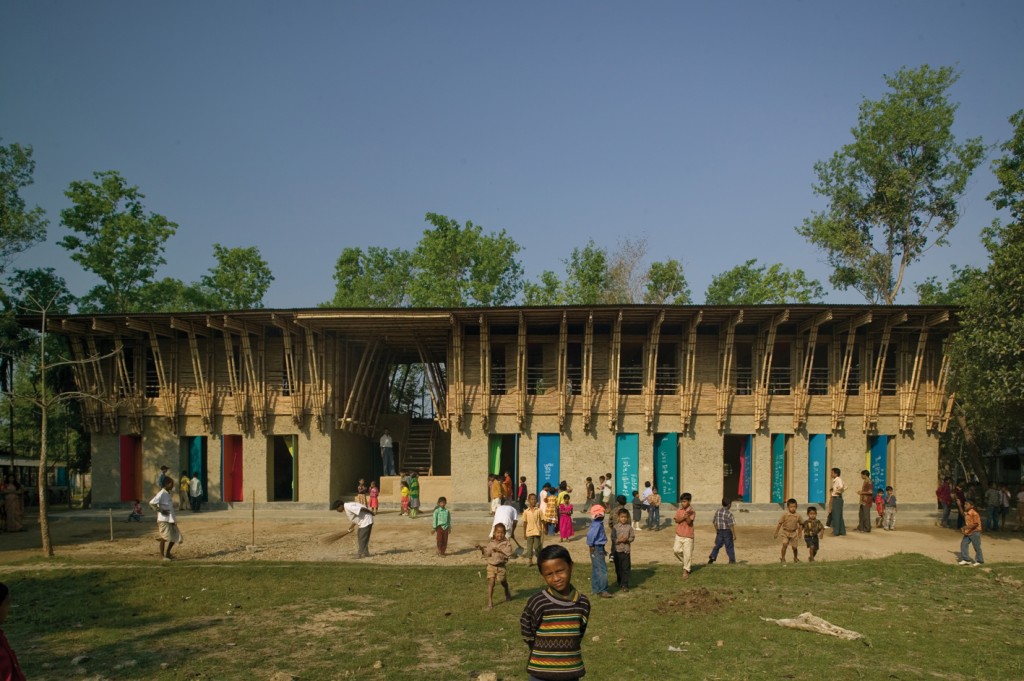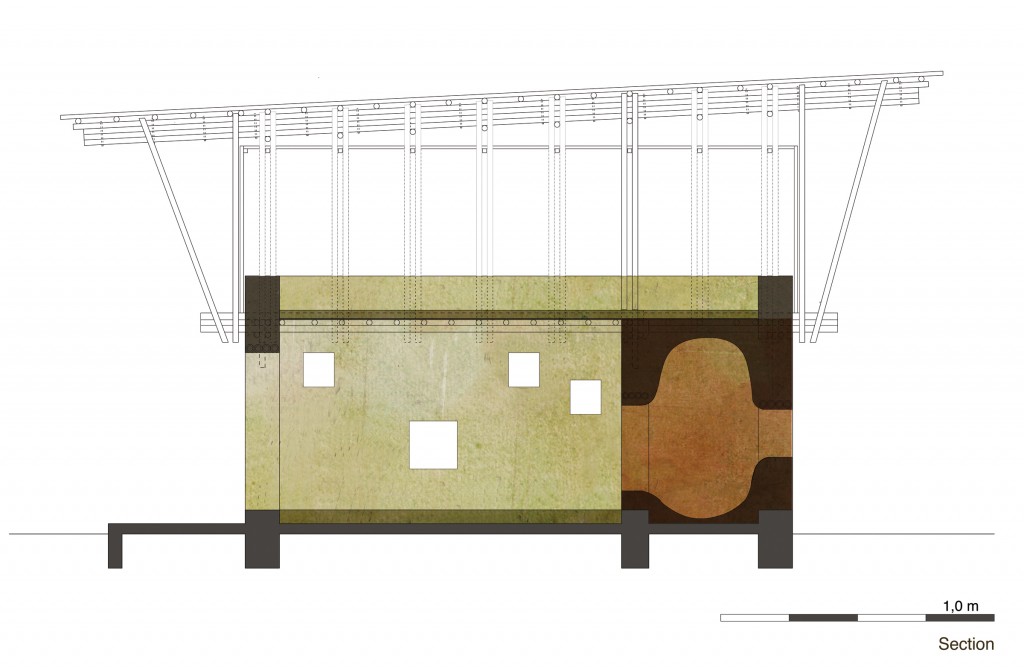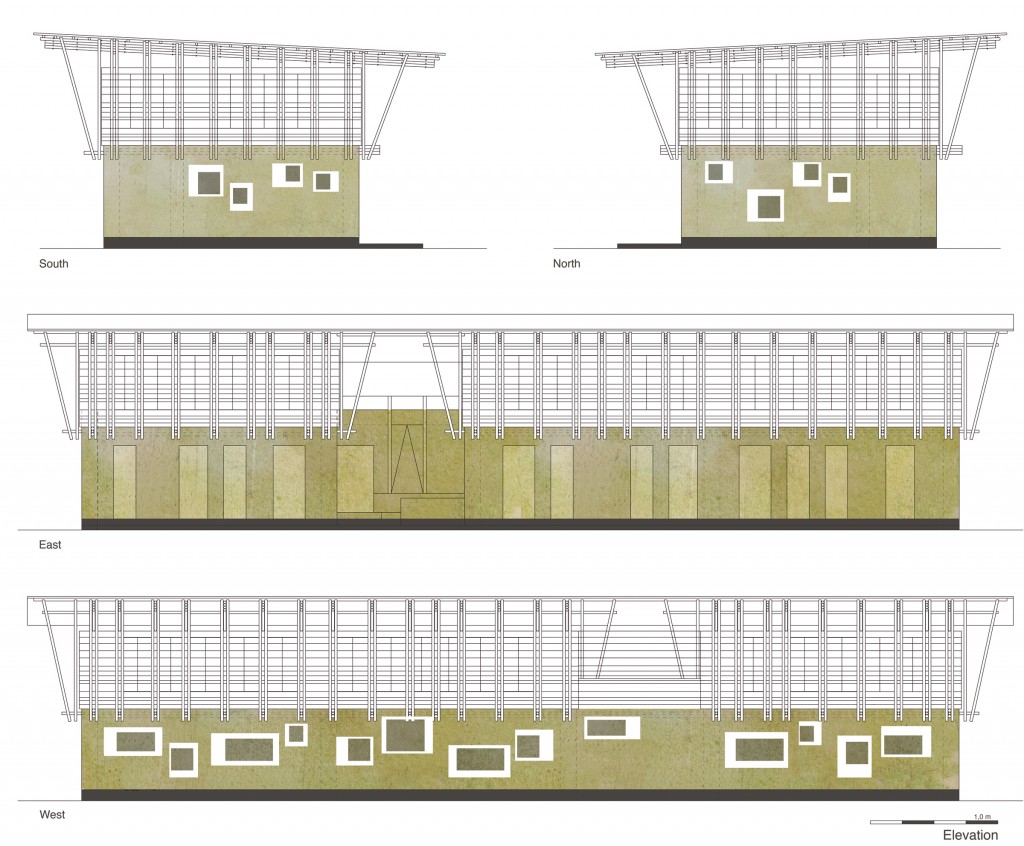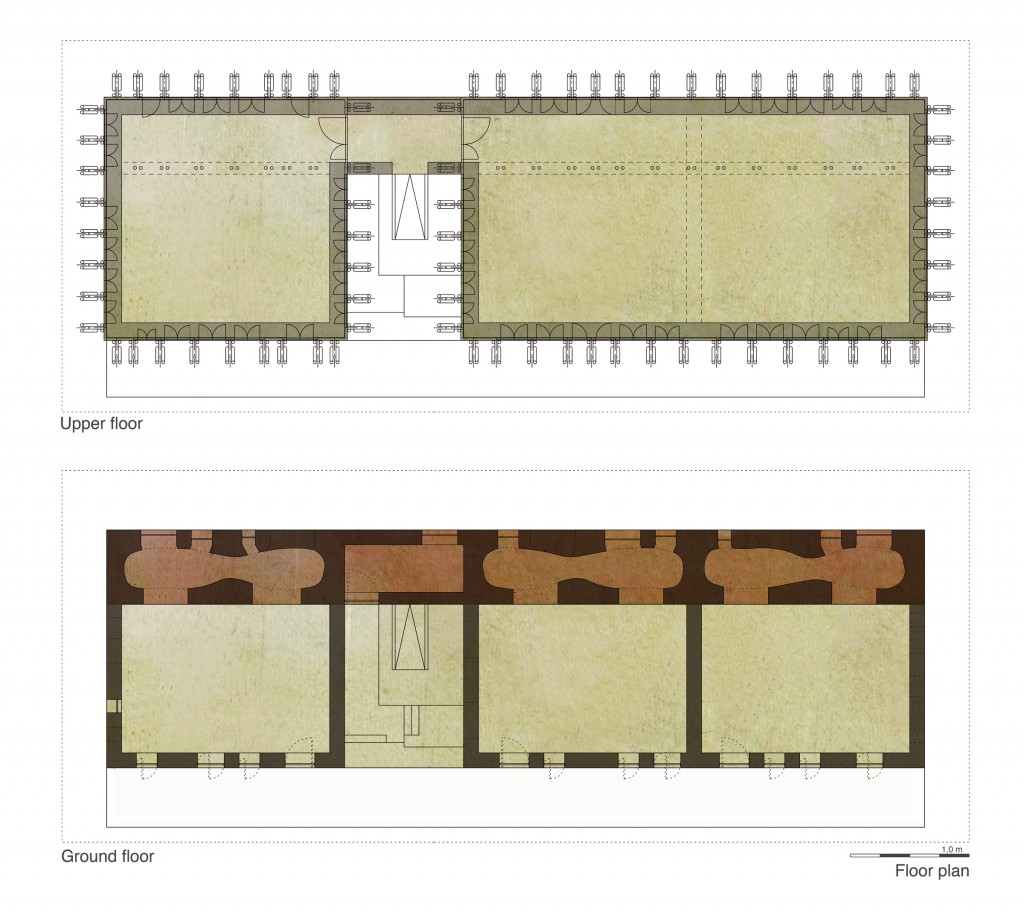critical text by Grafton Architects/Yvonne Farrell + Shelley Mcnamara
The school in Rudrapur, Bangladesh, is a combination of imagination and intelligence, people and local materials: a building of cultural value and structural elegance.
Since the beginning of our practice – Grafton Architects – educational buildings have deeply interested us, as they epitomize a real potential for architecture: contributing to communities and structuring space, tangible signs of belief in the future.
Like the Egyptian architect, Hassan Fathy, who made his architecture using mud and craft, Anna Heringer inhabits a humanist position to make meaningful and beautiful work.
The simple and poetic section places classrooms on two levels, connected by an open staircase. Grounded to the earth by sensuous mud walls; connected to the sky by structurally versatile, bamboo bundles, trapping breezes; protected by an over-hanging, corrugated metal roof; the back wall on ground level is carved out to form curved, “secret” places for the children to “hide”, learn and play. Locally-made cloth in beautiful colours drape openings and the upper ceiling.
Using her Master’s Thesis research subject, Anna Heringer translates from Theory to Reality, bringing others with her, understanding materials and local capabilities to build a project of lasting worth, both in itself and in its methodology.
In third world countries, the influence of the west pushes local materials out of use. Buildings in concrete become synonymous with modernity and progress. Heringer research leads her to “cob” – a clay, earth, sand and straw mixed with water, built in layers and dried. She makes architecture part of the everyday, not an exclusive discipline, experienced only by the privileged.
Professor Chris Morash of National University of Ireland, Maynooth recently quoted the 19th century playwrite Dion Bouciault, who said: «Art is not a church; it is a philosophy of pleasure». In this project, to the mixture of mud, bamboo, metal, cloth, brick, plastic, imagination, intelligence, co-operation and humanity, add Pleasure!
***
La scuola a Rudrapur in Bangladesh è il risultato di una combinazione di immaginazione, intelligenza, persone e materiali locali: un edificio di valore culturale ed eleganza strutturale.
Sin dall’inizio il nostro studio – Grafton Architects – ha nutrito un profondo interesse nei confronti degli edifici scolastici, poiché questi incarnano un vero potenziale per l’architettura: dando un contributo alle comunità e strutturando lo spazio, essi sono segni tangibili della fiducia nel futuro.
Come l’architetto egiziano Hassan Fathy, che ha realizzato le sue opere architettoniche artigianalmente in fango, Anna Heringer mostra una posizione umanista e progetta opere belle e ricche di significato.
La sezione, semplice e poetica, mostra la collocazione delle aule su due livelli, collegate da una scala esterna. La scuola è ancorata al terreno mediante sensuali pareti di fango; è protesa verso il cielo tramite fascine di bambù strutturalmente versatili che fermano il vento; è protetta da un tetto sporgente di metallo corrugato; il muro della facciata del retro a piano terra è intagliato per formare delle nicchie “segrete” in cui i bambini possano “nascondersi”, imparare e giocare. Le aperture e il soffitto superiore sono coperte da drappeggi in tessuto locale dai bei colori.
Usando il tema della sua tesi di Master, coinvolgendo altre persone, comprendendo i materiali e le abilità locali per costruire un progetto di valore duraturo, sia di per sé che per la sua metodologia, Anna Heringer traduce la “teoria” in “realtà”.
Nei paesi del terzo mondo, l’influenza dell’Occidente spinge a non utilizzare i materiali locali. Gli edifici in cemento divengono sinonimi di modernità e progresso. La ricerca di Heringer la porta a utilizzare i “mattoni crudi” – argilla, terra, sabbia e paglia mescolate con acqua – disposti in strati ed essiccati. Lei rende l’architettura parte del quotidiano e non una disciplina esclusiva, di cui possono godere solo i privilegiati.
Il Professor Chris Morash della National University of Ireland, Maynooth, recentemente ha citato il drammaturgo del diciannovesimo secolo Dion Bouciault, che affermava: «L’Arte non è una chiesa; è una filosofia del piacere». In questo progetto, al mix di fango, bambù, metallo, tessuto, mattone, plastica, immaginazione, intelligenza, co-operazione e umanità, aggiungete il Piacere!
The text is presented at the exhibition L’architettura che ti piace©/The architecture you like© opened at MAXXI, Rome until 15th May 2011. Info www.fondazionemaxxi.it
Il testo è presentato alla mostra L’architettura che ti piace©/The architecture you like© visitabile al MAXXI di Roma fino al 15 maggio 2011. Info www.fondazionemaxxi.it
